Thailand - The Classic Asian Birding Tour
Tuesday 20th January – Sunday 8th February
From a birder's point of view Thailand is a perfect destination to visit during the winter months, with an extremely rich and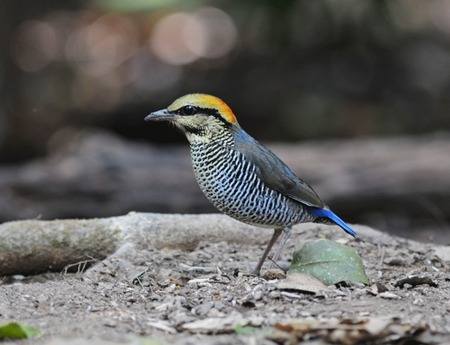 varied resident population augmented by an influx of migrants from the Himalayas and northern Asia. It is home to an exceptionally diverse range of habitats from coastal marshes and mudflats teeming with shorebirds to vast lowland rainforest and montane evergreen forest with their attendant mixed feeding flocks and seemingly endless possibilities! This newly-designed tour will begin in the forest-cloaked mountains and secluded valleys in the north of this fabulous country, where a wealth of montane specialities reside. There is a totally different avifauna to the rest of this wonderful country and we will visit the three best mountain sites of Doi Ang Khang, Doi Lang and Doi Inthanon which will provide us with some very exciting birding opportunities. As usual with a Zoothera tour we try and add something a little different and by birding the seldom visited Doi Lang we will do just that! Amongst the many montane specialities that can be found here we will search for the rare Hume's Pheasant, White-headed Bulbul, Stripe-breasted Woodpecker, White-browed and Silver-eared Laughingthrushes, Himalayan Cutia, Clicking Shrike-babbler, Dark-backed Sibia and Giant Nuthatch. There are usually some exciting Palearctic visitors around as well, maybe flocks of Eye-browed or a more skulking Grey-sided Thrush to add a little spice to proceedings. Then we fly back to Bangkok and visit the coastal hot-spots along the Gulf of Thailand and its multitude of shorebirds, before focussing on the forests of Kaeng Krachen and Khao Yai which offers a wide range of localised, scarce and distinctly tropical specialities. This tour is only available for a select group of 6 birders plus two experienced guides which is so essential for tropical forest birding, ensuring an extremely personalised and quality tour.
varied resident population augmented by an influx of migrants from the Himalayas and northern Asia. It is home to an exceptionally diverse range of habitats from coastal marshes and mudflats teeming with shorebirds to vast lowland rainforest and montane evergreen forest with their attendant mixed feeding flocks and seemingly endless possibilities! This newly-designed tour will begin in the forest-cloaked mountains and secluded valleys in the north of this fabulous country, where a wealth of montane specialities reside. There is a totally different avifauna to the rest of this wonderful country and we will visit the three best mountain sites of Doi Ang Khang, Doi Lang and Doi Inthanon which will provide us with some very exciting birding opportunities. As usual with a Zoothera tour we try and add something a little different and by birding the seldom visited Doi Lang we will do just that! Amongst the many montane specialities that can be found here we will search for the rare Hume's Pheasant, White-headed Bulbul, Stripe-breasted Woodpecker, White-browed and Silver-eared Laughingthrushes, Himalayan Cutia, Clicking Shrike-babbler, Dark-backed Sibia and Giant Nuthatch. There are usually some exciting Palearctic visitors around as well, maybe flocks of Eye-browed or a more skulking Grey-sided Thrush to add a little spice to proceedings. Then we fly back to Bangkok and visit the coastal hot-spots along the Gulf of Thailand and its multitude of shorebirds, before focussing on the forests of Kaeng Krachen and Khao Yai which offers a wide range of localised, scarce and distinctly tropical specialities. This tour is only available for a select group of 6 birders plus two experienced guides which is so essential for tropical forest birding, ensuring an extremely personalised and quality tour.
|
|
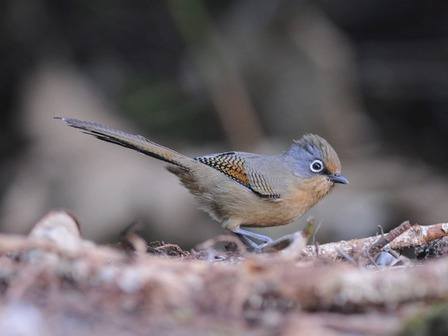 After an early morning flight from Bangkok to the northern city of Chiang Mai we will drive towards Doi Ang Khang. The forests along the way are home to Rufous-winged Buzzard, Black Baza and a selection of commoner species and we shall quickly head up into the mountains and the rugged frontier range of Doi Ang Khang. These northern mountains have a different avifauna from the rest of the country as many Himalayan species are close to the southern limit of distribution in this region. Our primary focus here will be to visit a couple of feeding stations which provide amazing views of species such as Black-breasted Thrush, Large and Rufous-bellied Niltava, White-tailed Robin and occasionally something rarer such as Japanese Thrush, Grey-winged Blackbird or more likely a Scaly Thrush. We will also be looking for some restricted range species such as Mountain Bamboo-partridge, Crested Finchbill, Brown-breasted Bulbul, White-browed Laughingthrush, Scarlet-faced Liocichla, Spectacled Barwing and Buff-throated Warbler. But there are many more new species here and during our stay we also have a chance of seeing Mountain Hawk-eagle, Pacific Swift, Striated Swallow, Speckled and White-browed Piculets, Bay Woodpecker, Chestnut-vented Nuthatch, White-headed and Striated Bulbuls, Daurian Redstart, Hill Prinia, Mountain Tailorbird, Bianchi's Warbler, Spot-throated Babbler, Rusty-cheeked Scimitar-babbler, Silver-eared Mesia, Grey-cheeked Fulvetta, Dark-backed Sibia and both Little and Chestnut Buntings. We will spend the night at a superbly situated mountain resort.
After an early morning flight from Bangkok to the northern city of Chiang Mai we will drive towards Doi Ang Khang. The forests along the way are home to Rufous-winged Buzzard, Black Baza and a selection of commoner species and we shall quickly head up into the mountains and the rugged frontier range of Doi Ang Khang. These northern mountains have a different avifauna from the rest of the country as many Himalayan species are close to the southern limit of distribution in this region. Our primary focus here will be to visit a couple of feeding stations which provide amazing views of species such as Black-breasted Thrush, Large and Rufous-bellied Niltava, White-tailed Robin and occasionally something rarer such as Japanese Thrush, Grey-winged Blackbird or more likely a Scaly Thrush. We will also be looking for some restricted range species such as Mountain Bamboo-partridge, Crested Finchbill, Brown-breasted Bulbul, White-browed Laughingthrush, Scarlet-faced Liocichla, Spectacled Barwing and Buff-throated Warbler. But there are many more new species here and during our stay we also have a chance of seeing Mountain Hawk-eagle, Pacific Swift, Striated Swallow, Speckled and White-browed Piculets, Bay Woodpecker, Chestnut-vented Nuthatch, White-headed and Striated Bulbuls, Daurian Redstart, Hill Prinia, Mountain Tailorbird, Bianchi's Warbler, Spot-throated Babbler, Rusty-cheeked Scimitar-babbler, Silver-eared Mesia, Grey-cheeked Fulvetta, Dark-backed Sibia and both Little and Chestnut Buntings. We will spend the night at a superbly situated mountain resort. 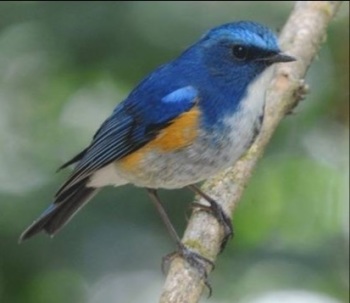 After some final birding trying to catch up with any species still missing from our lists we will begin our journey to the lesser known but incredibly bird-rich mountain of Doi Lang. Birding the amazing montane forest of Doi Lang will give us the opportunity to see many species not likely elsewhere on the tour and is a site seldom visited by other visiting birders - and there is often a rarity or two two get us really buzzing! This particular mountain is currently the prime site for two of Thailand's rarest birds, Giant Nuthatch and Hume's Pheasant. The former species is as big as a medium-sized woodpecker and is found high in the canopy of the tallest pine trees, whilst the latter inhabits the higher slopes which are dotted with trees. Doi Lang has numerous feeding stations and provide outstanding photographic opportunities for those who wish, as the birds can be watched at incredibly close quarters. Many of these birds are extremely shy and hardly ever seen under normal circumstances, but here we have a rather unique opportunity to observe them easily. During the last couple of years we have seen goodies such as Rusty-naped Pitta, Slaty-blue Flycatcher, Spot-breasted Laughingthrush, Northern Red-flanked Bluetail, Golden Bush Robin, Chestnut-headed Tesia and Spot-throated Babbler. Although nothing is guaranteed, other more regular species to be seen at these feeding stations include the amazingly bright Scarlet-faced Liocichla, Himalayan Bluetail, White-gorgeted and Rufous-gorgeted Flycatchers, White-tailed Robin, Hill Prinia, White-bellied Redstart, Siberian Rubythroat, Rusty-cheeked Scimitar-babbler, Silver-eared and White-browed Laughingthrush, Blue Whistling-Thrush, Spectacled Barwing, and sometimes a Chestnut or Eye-browed Thrush.
After some final birding trying to catch up with any species still missing from our lists we will begin our journey to the lesser known but incredibly bird-rich mountain of Doi Lang. Birding the amazing montane forest of Doi Lang will give us the opportunity to see many species not likely elsewhere on the tour and is a site seldom visited by other visiting birders - and there is often a rarity or two two get us really buzzing! This particular mountain is currently the prime site for two of Thailand's rarest birds, Giant Nuthatch and Hume's Pheasant. The former species is as big as a medium-sized woodpecker and is found high in the canopy of the tallest pine trees, whilst the latter inhabits the higher slopes which are dotted with trees. Doi Lang has numerous feeding stations and provide outstanding photographic opportunities for those who wish, as the birds can be watched at incredibly close quarters. Many of these birds are extremely shy and hardly ever seen under normal circumstances, but here we have a rather unique opportunity to observe them easily. During the last couple of years we have seen goodies such as Rusty-naped Pitta, Slaty-blue Flycatcher, Spot-breasted Laughingthrush, Northern Red-flanked Bluetail, Golden Bush Robin, Chestnut-headed Tesia and Spot-throated Babbler. Although nothing is guaranteed, other more regular species to be seen at these feeding stations include the amazingly bright Scarlet-faced Liocichla, Himalayan Bluetail, White-gorgeted and Rufous-gorgeted Flycatchers, White-tailed Robin, Hill Prinia, White-bellied Redstart, Siberian Rubythroat, Rusty-cheeked Scimitar-babbler, Silver-eared and White-browed Laughingthrush, Blue Whistling-Thrush, Spectacled Barwing, and sometimes a Chestnut or Eye-browed Thrush. 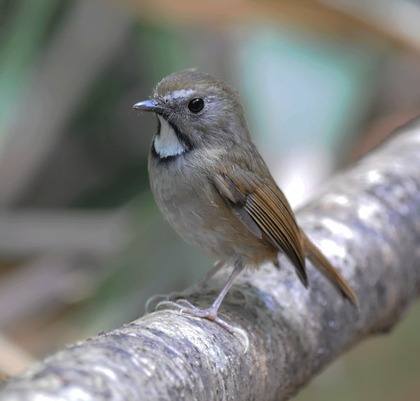 Birding from the road will give us access to superb montane forest where we will search for Mountain Bamboo-Partridge, Collared Owlet, Golden-throated Barbet, Rufous-backed Sibia, Spot-breasted Parrotbill, Whiskered Yuhina, Black-throated Tit, Chinese Leaf-warbler, Buff-throated Warbler, Crested Finchbill, Spot-winged Grosbeak and we have even seen Himalayan Cutia here. This is also the only site in the country to find Fire-tailed Sunbird as well. Other species present here include Large Hawk-cuckoo, Fork-tailed and Cook's Swifts, White-browed Piculet, Grey-capped, Crimson-breasted and Stripe-breasted Woodpeckers, Asian House Martin, Grey-chinned and Long-tailed Minivets, Ashy and Mountain Bulbuls, Grey Bushchat, Olive-backed Pipit, Slaty-backed, Sapphire, Little Pied and Pale Blue Flycatchers, Chestnut-bellied Rock-thrush, Silver-breasted and Long-tailed Broadbills, Mrs Gould's Sunbird, Orange-bellied Leafbird, Chestnut-flanked White-eye, Rufescent Prinia, Aberrant Bush-warbler, Davison's, Yellow-browed and Hume's Leaf-warblers, Bianchi's Warbler, Black-eared Shrike-babbler, Rufous-fronted Babbler, Blue-winged Minla, Chestnut-fronted Shrike-babbler, Striated Yuhina, Lesser Racket-tailed Drongo, Maroon Oriole, Chestnut-vented Nuthatch, Streaked Spiderhunter, Spot-winged Grosbeak and Common Rosefinch. We have also seen scarcer species such as Lesser Rufous-headed Parrotbill, Collared Babbler, Red-billed Scimitar-babbler and Black-headed Greenfinch as well!
Birding from the road will give us access to superb montane forest where we will search for Mountain Bamboo-Partridge, Collared Owlet, Golden-throated Barbet, Rufous-backed Sibia, Spot-breasted Parrotbill, Whiskered Yuhina, Black-throated Tit, Chinese Leaf-warbler, Buff-throated Warbler, Crested Finchbill, Spot-winged Grosbeak and we have even seen Himalayan Cutia here. This is also the only site in the country to find Fire-tailed Sunbird as well. Other species present here include Large Hawk-cuckoo, Fork-tailed and Cook's Swifts, White-browed Piculet, Grey-capped, Crimson-breasted and Stripe-breasted Woodpeckers, Asian House Martin, Grey-chinned and Long-tailed Minivets, Ashy and Mountain Bulbuls, Grey Bushchat, Olive-backed Pipit, Slaty-backed, Sapphire, Little Pied and Pale Blue Flycatchers, Chestnut-bellied Rock-thrush, Silver-breasted and Long-tailed Broadbills, Mrs Gould's Sunbird, Orange-bellied Leafbird, Chestnut-flanked White-eye, Rufescent Prinia, Aberrant Bush-warbler, Davison's, Yellow-browed and Hume's Leaf-warblers, Bianchi's Warbler, Black-eared Shrike-babbler, Rufous-fronted Babbler, Blue-winged Minla, Chestnut-fronted Shrike-babbler, Striated Yuhina, Lesser Racket-tailed Drongo, Maroon Oriole, Chestnut-vented Nuthatch, Streaked Spiderhunter, Spot-winged Grosbeak and Common Rosefinch. We have also seen scarcer species such as Lesser Rufous-headed Parrotbill, Collared Babbler, Red-billed Scimitar-babbler and Black-headed Greenfinch as well!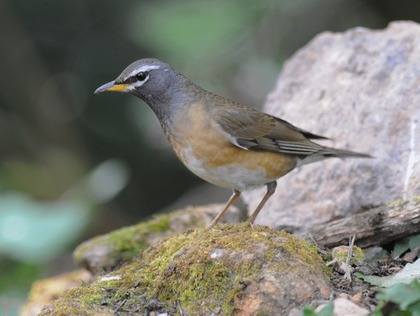 Early this morning we will drive straight to a wonderful resort close to Doi Inthanon for a three-night stay. This is the highest mountain in Thailand at over 2,500m and we shall have ample time to explore the dipterocarp forest of the lower slope and evergreen forest near the summit, where we shall concentrate our search for certain species. This is one of the classic birding sites in all Asia and at the summit a sphagnum bog surrounded by rhododendron trees draped in hanging moss and epiphytes is home to some special birds. At the edges of this bog Himalayan Bluetail, Dark-sided Thrush, Pygmy Wren-babbler and White-browed Shortwing can be found skulking in the shadows, whilst Chestnut-tailed Minla, Grey-sided Thrush, Rufous-winged Fulvetta, Chestnut-crowned and Ashy-throated Warblers, Silver-eared (split from Chestnut-crowned) Laughingthrush, Snowy-browed Flycatcher, Yellow-bellied Fantail, Green-tailed and Gould's Sunbirds, Yellow-browed Tit, and occasionally Rufous-throated Partridge, Ashy Woodpigeon, Yellow-bellied Flowerpecker and Yellow-browed Tit can sometimes be found. We will encounter large mixed feeding flocks as we walk quietly along the trails and each one will hold new species for us and these sudden bursts of
Early this morning we will drive straight to a wonderful resort close to Doi Inthanon for a three-night stay. This is the highest mountain in Thailand at over 2,500m and we shall have ample time to explore the dipterocarp forest of the lower slope and evergreen forest near the summit, where we shall concentrate our search for certain species. This is one of the classic birding sites in all Asia and at the summit a sphagnum bog surrounded by rhododendron trees draped in hanging moss and epiphytes is home to some special birds. At the edges of this bog Himalayan Bluetail, Dark-sided Thrush, Pygmy Wren-babbler and White-browed Shortwing can be found skulking in the shadows, whilst Chestnut-tailed Minla, Grey-sided Thrush, Rufous-winged Fulvetta, Chestnut-crowned and Ashy-throated Warblers, Silver-eared (split from Chestnut-crowned) Laughingthrush, Snowy-browed Flycatcher, Yellow-bellied Fantail, Green-tailed and Gould's Sunbirds, Yellow-browed Tit, and occasionally Rufous-throated Partridge, Ashy Woodpigeon, Yellow-bellied Flowerpecker and Yellow-browed Tit can sometimes be found. We will encounter large mixed feeding flocks as we walk quietly along the trails and each one will hold new species for us and these sudden bursts of 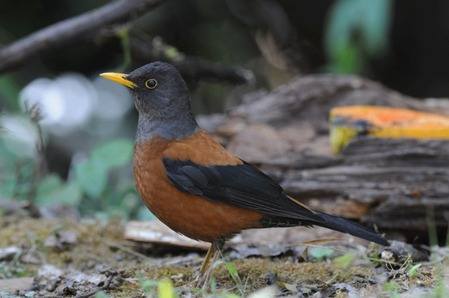 activity is what makes a visit here so exciting. Imagine hearing a cacophony of noise making its way up a densely wooded slope towards our position until there are birds all around and we find Blyth's Leaf-warbler, Clicking Shrike-babbler, Yellow-cheeked Tit, Grey-throated Babbler, Bar-winged Flycatcher-shrike and White-bellied Erpornis. Meanwhile, some movement amongst the leaf litter leads us to catch a glimpse of a cryptically camouflaged Scaly Thrush. Moving down the mountain we can find Black-tailed Crake, Speckled Woodpigeon, Dark-backed and Rufous-backed Sibia, the scarce White-necked Laughingthrush, Chestnut-flanked White-eye, flocks of wintering Eye-browed Thrushes, the skulking Slaty-bellied Tesia, Black-throated Parrotbill, White-gorgeted Flycatcher, Rufous-bellied and Large Niltavas, Lesser Shortwing and Hume's Treecreeper. The more open grass and scrub areas lower down can also be productive and this is where we could find the rare and localised White-headed Bulbul, and continuing down to the dry deciduous woodland at the base of the mountain we should pick up Black-backed Forktail and both Plumbeous and White-capped Water-redstarts at some beautiful waterfalls. 3 nights at Doi Inthanon Highland Resort.
activity is what makes a visit here so exciting. Imagine hearing a cacophony of noise making its way up a densely wooded slope towards our position until there are birds all around and we find Blyth's Leaf-warbler, Clicking Shrike-babbler, Yellow-cheeked Tit, Grey-throated Babbler, Bar-winged Flycatcher-shrike and White-bellied Erpornis. Meanwhile, some movement amongst the leaf litter leads us to catch a glimpse of a cryptically camouflaged Scaly Thrush. Moving down the mountain we can find Black-tailed Crake, Speckled Woodpigeon, Dark-backed and Rufous-backed Sibia, the scarce White-necked Laughingthrush, Chestnut-flanked White-eye, flocks of wintering Eye-browed Thrushes, the skulking Slaty-bellied Tesia, Black-throated Parrotbill, White-gorgeted Flycatcher, Rufous-bellied and Large Niltavas, Lesser Shortwing and Hume's Treecreeper. The more open grass and scrub areas lower down can also be productive and this is where we could find the rare and localised White-headed Bulbul, and continuing down to the dry deciduous woodland at the base of the mountain we should pick up Black-backed Forktail and both Plumbeous and White-capped Water-redstarts at some beautiful waterfalls. 3 nights at Doi Inthanon Highland Resort.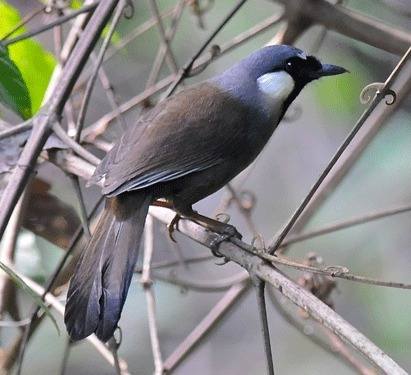 An early start will see us heading to Khao Yai for a 2 night stay, stopping en-route at a very special site for the localised Limestone Wren-babbler. This is an intriguing species as it is only found at one or two key localities in this corner of Thailand and we shall make a special effort to find it. We are not too far from Khao Yai and will take some time to enjoy the Lineated Barbets, Black-naped Orioles and a few other species here before heading to the National Park. The 542,000 acres of hills and mountains of khao Yai are covered by dry deciduous forest at lower elevations and tropical moist evergreen forest higher up, interspersed with productive areas of grassland. This site represents some of the best remaining tracts of lowland forest in the country and is a haven for all forms of wildlife. A single road ascends to the highest point at 1,300m and from here a network of trails will give us access to the forest where we will search for a good selection of the numerous species to have been recorded here. By quietly walking the trails we have a chance of finding some of the shyer denizens of the understory such as Silver Pheasant, Siamese Fireback, Red Junglefowl, Blue Pitta, Forest Wagtail or Scaly Thrush, whilst we can always hope for a sighting of the much-wanted Coral-billed Ground Cuckoo. One of the features of our birding will be the sudden appearance of a mixed species flock within which numerous birds occur and just as quickly as they arrived, the flock moves off deep within the forest leaving silence where mere minutes before the trees reverberated to strange calls and the noise of wings. These bird waves usually contain species such as Red-headed
An early start will see us heading to Khao Yai for a 2 night stay, stopping en-route at a very special site for the localised Limestone Wren-babbler. This is an intriguing species as it is only found at one or two key localities in this corner of Thailand and we shall make a special effort to find it. We are not too far from Khao Yai and will take some time to enjoy the Lineated Barbets, Black-naped Orioles and a few other species here before heading to the National Park. The 542,000 acres of hills and mountains of khao Yai are covered by dry deciduous forest at lower elevations and tropical moist evergreen forest higher up, interspersed with productive areas of grassland. This site represents some of the best remaining tracts of lowland forest in the country and is a haven for all forms of wildlife. A single road ascends to the highest point at 1,300m and from here a network of trails will give us access to the forest where we will search for a good selection of the numerous species to have been recorded here. By quietly walking the trails we have a chance of finding some of the shyer denizens of the understory such as Silver Pheasant, Siamese Fireback, Red Junglefowl, Blue Pitta, Forest Wagtail or Scaly Thrush, whilst we can always hope for a sighting of the much-wanted Coral-billed Ground Cuckoo. One of the features of our birding will be the sudden appearance of a mixed species flock within which numerous birds occur and just as quickly as they arrived, the flock moves off deep within the forest leaving silence where mere minutes before the trees reverberated to strange calls and the noise of wings. These bird waves usually contain species such as Red-headed Trogon, Verditer Flycatcher, Striped Tit-babbler, White-bellied Erpornis, Spangled Drongo and Claudia's Leaf-warbler,
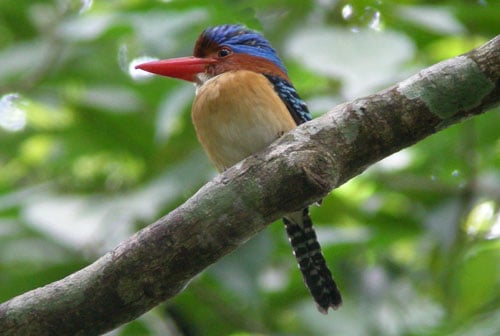 whilst we need to thoroughly search each flock for new species such as Long-tailed Broadbill, Green-billed Malkoha, Little Spiderhunter or Common Green Magpie amongst many other possibilities. Other birds here include Collared Owlet, Great-eared Nightjar, Great Pied and Wreathed Hornbills, Mountain Imperial-pigeon, Blue-bearded and Chestnut-headed Bee-eaters, Banded Kingfisher, Brown-backed Needletail, Blue-eared, Moustached and Green-eared Barbets, Dusky Broadbill, Asian Fairy Bluebird, White-rumped Shama, Indian Roller, Rosy and Swinhoe's Minivets, Siberian Blue Robin, Siberian Rubythroat, Puff-throated and Grey-eyed Bulbuls, Hainan Blue Flycatcher, White-crowned Forktail, Orange-headed Thrush, Olive-backed Pipit, Dark-necked Tailorbird, Yellow-vented and Fire-breasted Flowerpeckers, Pale-legged, Thick-billed, Two-barred, Yellow-browed and Radde's Warblers, Black-throated, Van Hasselt's and Crimson Sunbirds, Black-throated, White-crested and Lesser-necklaced Laughingthrushes, Large and White-browed Scimitar-babblers, Abbott's Babbler and many others. Other animals present here include Asian Elephant, Pig-tailed Macaque, White-handed Gibbons, Sambar, Muntjac, East Asian Porcupine and a whole range of amphibians and small reptiles to keep the all-round wildlife enthusiast happy. 2 nights at Khao Yai.
whilst we need to thoroughly search each flock for new species such as Long-tailed Broadbill, Green-billed Malkoha, Little Spiderhunter or Common Green Magpie amongst many other possibilities. Other birds here include Collared Owlet, Great-eared Nightjar, Great Pied and Wreathed Hornbills, Mountain Imperial-pigeon, Blue-bearded and Chestnut-headed Bee-eaters, Banded Kingfisher, Brown-backed Needletail, Blue-eared, Moustached and Green-eared Barbets, Dusky Broadbill, Asian Fairy Bluebird, White-rumped Shama, Indian Roller, Rosy and Swinhoe's Minivets, Siberian Blue Robin, Siberian Rubythroat, Puff-throated and Grey-eyed Bulbuls, Hainan Blue Flycatcher, White-crowned Forktail, Orange-headed Thrush, Olive-backed Pipit, Dark-necked Tailorbird, Yellow-vented and Fire-breasted Flowerpeckers, Pale-legged, Thick-billed, Two-barred, Yellow-browed and Radde's Warblers, Black-throated, Van Hasselt's and Crimson Sunbirds, Black-throated, White-crested and Lesser-necklaced Laughingthrushes, Large and White-browed Scimitar-babblers, Abbott's Babbler and many others. Other animals present here include Asian Elephant, Pig-tailed Macaque, White-handed Gibbons, Sambar, Muntjac, East Asian Porcupine and a whole range of amphibians and small reptiles to keep the all-round wildlife enthusiast happy. 2 nights at Khao Yai.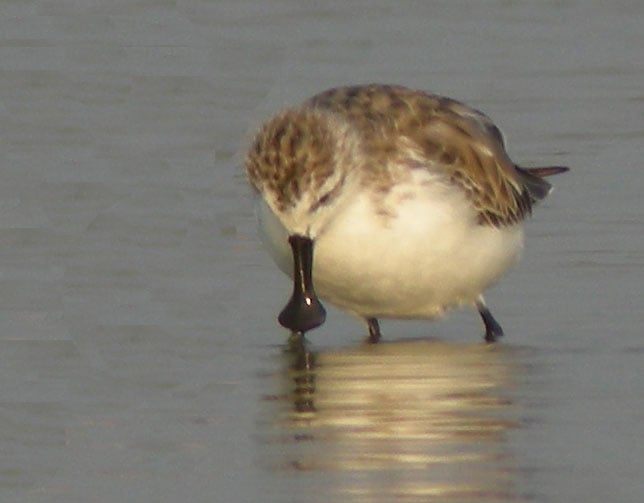 After a final morning at Khao Yai in search of any species we still need to see we will head out on the drive to the famous wader hotspots in the Petchaburi area. This is a huge area of salt workings where the sheer numbers of waders is a very impressive sight indeed. In recent years this has been a regular wintering site for a small number of wintering Spoon-billed Sandpipers and we have a very good chance of observing this very rare species. We will also concentrate our efforts on the sought-after Nordmann's Greenshank and Asiatic Dowitcher as well. For the wader enthusiast this is heaven as amongst the more familiar species we can find Pacific Golden and Kentish Plovers, Broad-billed and Marsh Sandpipers, large flocks of Great Knots, Greater and Lesser Sandplovers, Terek Sandpiper, Temminck's, Red-necked and Long-toed Stints and Red-necked Phalarope amongst an impressive total of around 40+ wader species possible here! In the late afternoon we will take a short boat ride through the mangroves to a nearby sandspit at Laem Phak Bia where it is usually possible to see White-faced Plover, along with the increasingly rare Malaysian Plover. Other possibilities
After a final morning at Khao Yai in search of any species we still need to see we will head out on the drive to the famous wader hotspots in the Petchaburi area. This is a huge area of salt workings where the sheer numbers of waders is a very impressive sight indeed. In recent years this has been a regular wintering site for a small number of wintering Spoon-billed Sandpipers and we have a very good chance of observing this very rare species. We will also concentrate our efforts on the sought-after Nordmann's Greenshank and Asiatic Dowitcher as well. For the wader enthusiast this is heaven as amongst the more familiar species we can find Pacific Golden and Kentish Plovers, Broad-billed and Marsh Sandpipers, large flocks of Great Knots, Greater and Lesser Sandplovers, Terek Sandpiper, Temminck's, Red-necked and Long-toed Stints and Red-necked Phalarope amongst an impressive total of around 40+ wader species possible here! In the late afternoon we will take a short boat ride through the mangroves to a nearby sandspit at Laem Phak Bia where it is usually possible to see White-faced Plover, along with the increasingly rare Malaysian Plover. Other possibilities 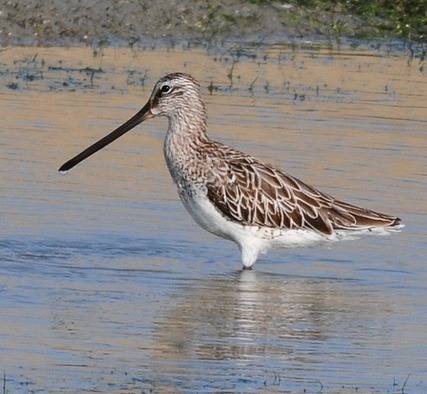 include Chinese Egret, Pacific Reef Egret, Great Black-headed and Heuglin's Gulls, Great and Lesser Crested Terns and a few commoner species.
include Chinese Egret, Pacific Reef Egret, Great Black-headed and Heuglin's Gulls, Great and Lesser Crested Terns and a few commoner species.Days 16 - 18 Petchaburi – Kaeng Krachen
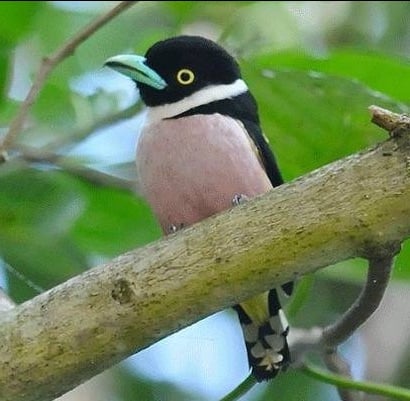 Leaving here, we will drive to Kaeng Krachan, calling in to a nice patch of dry dipterocarp forest where we can look for the spectacular Black-headed Woodpecker, along with Rufous Woodpecker, Spotted and Asian Barred Owlets, Red-breasted Parakeet, Purple Sunbird, Forest Wagtail, Rufous Treepie and other species. We should have finished here by mid-morning and then will drive the short distance into the national park and spend the rest of the day birding in this amazing forest. We will then have a further two full days to explore the hill and lowland evergreen forest of the largest national park in Thailand, which protects 3,000 square kilometres of pristine habitat and the richest avifauna in the whole country. It is located on the eastern flank of the remote Tenasserim mountain range that borders Myanmar. Our visit here gives us the possibility of seeing many lower elevation species as the park only rises to 1513m on Panern Thung, the highest point of the mountain. Birding is done mainly from the 36 kilometre long entrance road and a series of trails and amongst many fantastic possibilities here we can find Grey Peacock-pheasant, Kalij Pheasant, Chinese Sparrowhawk, Black Baza, Grey-faced Buzzard, Black-thighed Falconet, Thick-billed Green Pigeon, Collared Scops-owl, Tickell's Brown, Great and Wreathed Hornbills, White-browed Piculet, Common and Greater Flamebacks, Greater Yellownape, Great Slaty and Grey-and-Buff Woodpeckers, Green-billed Malkoha, Great, Red-throated, Moustached, Green-eared and Blue-eared Barbets, Large-tailed Nightjar, Heart-spotted Woodpecker, Vernal Hanging-parrot, Violet, Asian Emerald, Indian and Banded Bay Cuckoos, Black-naped Oriole, Banded Kingfisher, Red-bearded Bee-eater, Red-headed and Orange-breasted Trogons, Blue Pitta, Asian Fairy Bluebird, Himalayan Swiftlet, Brown-backed Needletail, Long-tailed, Silver-breasted, Black-and-yellow, Black-and-red, Banded and Dusky Broadbills, Great Iora, Large Woodshrike, Sultan Tit, Rosy, Grey-chinned and
Leaving here, we will drive to Kaeng Krachan, calling in to a nice patch of dry dipterocarp forest where we can look for the spectacular Black-headed Woodpecker, along with Rufous Woodpecker, Spotted and Asian Barred Owlets, Red-breasted Parakeet, Purple Sunbird, Forest Wagtail, Rufous Treepie and other species. We should have finished here by mid-morning and then will drive the short distance into the national park and spend the rest of the day birding in this amazing forest. We will then have a further two full days to explore the hill and lowland evergreen forest of the largest national park in Thailand, which protects 3,000 square kilometres of pristine habitat and the richest avifauna in the whole country. It is located on the eastern flank of the remote Tenasserim mountain range that borders Myanmar. Our visit here gives us the possibility of seeing many lower elevation species as the park only rises to 1513m on Panern Thung, the highest point of the mountain. Birding is done mainly from the 36 kilometre long entrance road and a series of trails and amongst many fantastic possibilities here we can find Grey Peacock-pheasant, Kalij Pheasant, Chinese Sparrowhawk, Black Baza, Grey-faced Buzzard, Black-thighed Falconet, Thick-billed Green Pigeon, Collared Scops-owl, Tickell's Brown, Great and Wreathed Hornbills, White-browed Piculet, Common and Greater Flamebacks, Greater Yellownape, Great Slaty and Grey-and-Buff Woodpeckers, Green-billed Malkoha, Great, Red-throated, Moustached, Green-eared and Blue-eared Barbets, Large-tailed Nightjar, Heart-spotted Woodpecker, Vernal Hanging-parrot, Violet, Asian Emerald, Indian and Banded Bay Cuckoos, Black-naped Oriole, Banded Kingfisher, Red-bearded Bee-eater, Red-headed and Orange-breasted Trogons, Blue Pitta, Asian Fairy Bluebird, Himalayan Swiftlet, Brown-backed Needletail, Long-tailed, Silver-breasted, Black-and-yellow, Black-and-red, Banded and Dusky Broadbills, Great Iora, Large Woodshrike, Sultan Tit, Rosy, Grey-chinned and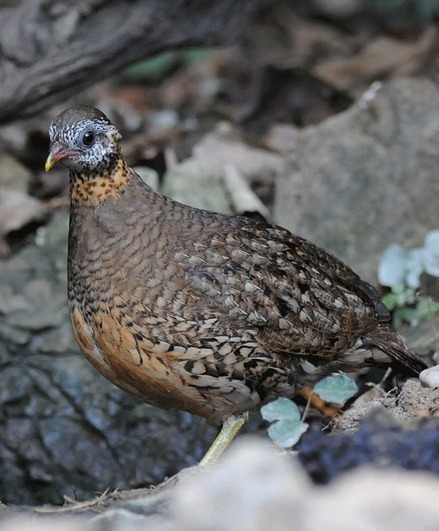 Swinhoe's Minivets, Flavescent and Ochraceous Bulbuls, Dark-necked Tailorbird, Yellow-bellied and Sulphur-breasted Warblers, Hill Blue, Taiga, Dark-sided, Rufous-browed and Asian Brown Flycatchers, Blyth's Shrike-babbler, Large and White-browed Scimitar-babblers, Spot-necked, Collared and Golden Babblers, Black-throated Laughingthrush, Crested Jay and the extremely localised Ratchet-tailed Treepie.
Swinhoe's Minivets, Flavescent and Ochraceous Bulbuls, Dark-necked Tailorbird, Yellow-bellied and Sulphur-breasted Warblers, Hill Blue, Taiga, Dark-sided, Rufous-browed and Asian Brown Flycatchers, Blyth's Shrike-babbler, Large and White-browed Scimitar-babblers, Spot-necked, Collared and Golden Babblers, Black-throated Laughingthrush, Crested Jay and the extremely localised Ratchet-tailed Treepie. Airfare: £650.00 - £750.00 (Approx) - UK/UK
Zoothera tour prices explained
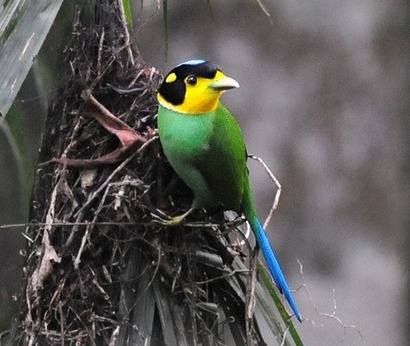
Group size: Minimum for tour to go ahead 3 and maximum of 6 with 2 leaders
Included in cost: Accommodation in twin rooms en-suite, all meals (including bottled water), transport in air-conditioned minibus throughout the tour, internal flights (Bangkok - Chiang Mai return), boat trip if req'd, all reserve entrance fees and services of the leaders.
Not included: International airfare, insurance, drinks, tips, and items of a personal nature.
Accommodation: The lodges and hotels used on this tour are of a reasonable - good standard and all with en-suite facilities. We will stay in the best available lodges/guest houses close to the birding sites.
Tour Code: This is a standard tour where early starts and some late finishes can be expected. Most of our birding walks will be of a usual slow pace and relatively easy. Expect a typically tropical climate with most days being hot and humid, and some light showers are possible at Kaeng Krachen. Whilst in the northern mountains it can be cooler in the early morning, late evening and overnight.
Receive our e-newsletter:
Join the Zoothera e-mailing list for up-to-date news on new tours, tour reports and special offers.
Click Here to sign up.
Previous Tour Reports: January 2009 2012 Species list January 2012 Tour 1 January 2012 Tour 2 Jan/Feb 2013 January 2014
2014 Checklist North Thailand Report 2014 Central Thailand Tour 2 2014
2013 Photo Gallery 2012 Photo Gallery
FLICKR Thailand Photo Gallery
Recommended Books, CD's and more from NHBS. Click on - Buy from NHBS - to go straight to website!

The air holidays and flights shown are ATOL protected by the Civil Aviation Authority.
Our ATOL number is 10436. Please see our Terms and Conditions for more information.
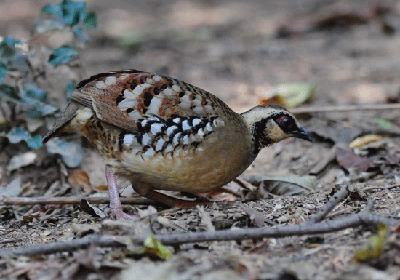 | 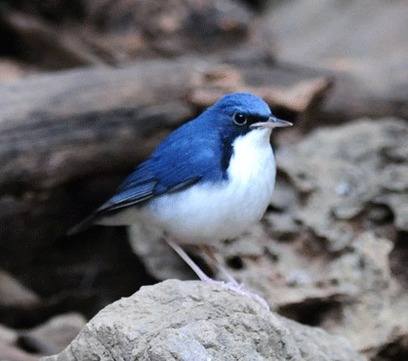 | 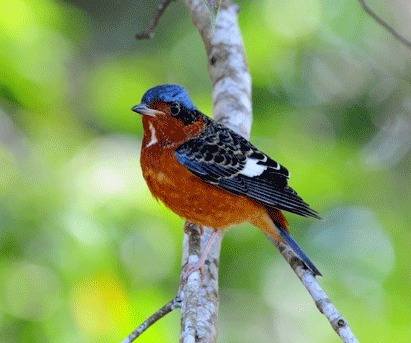 |
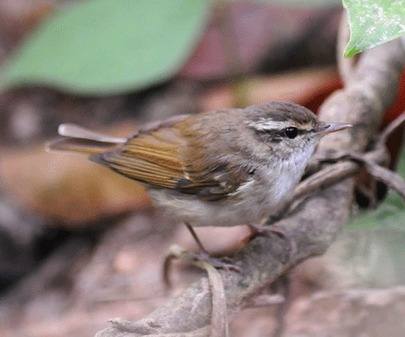 | 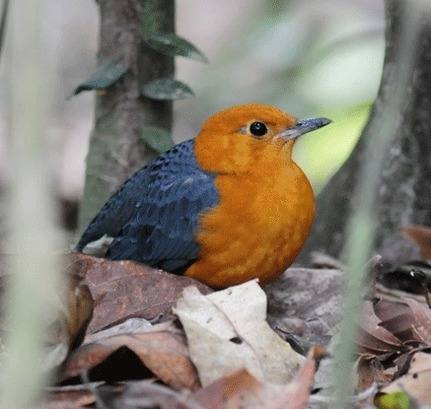 | 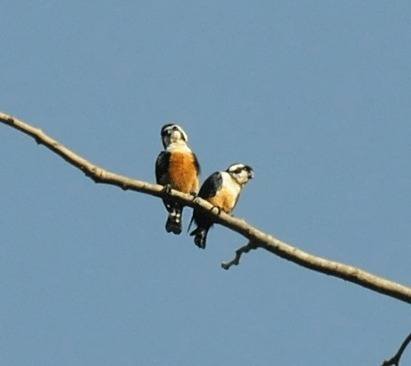 |
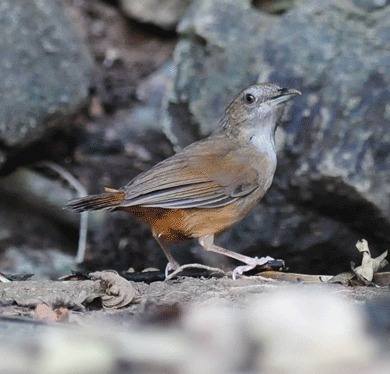 | 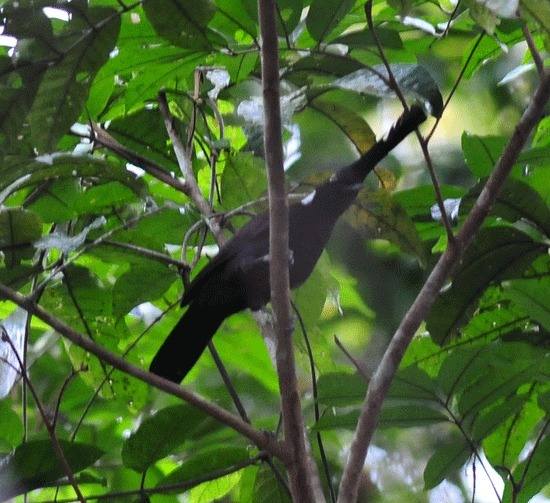 |  |
